1956 Cadillac Sedan Deville, Kustom
- Price:
- Condition: Used
- Make: Cadillac
- Model: DeVille
- Type: Sedan
- Trim: 4 door Hard Top
- Year: 1956
- Mileage: 9,000
- VIN: 8668
- Color: Black
- Engine size: Cadillac 472
- Number of cylinders: 8
- Power options: Power Windows, Power Seats
- Fuel: Gasoline
- Transmission: Automatic
- Drive type: RWD
- Interior color: Black/White
- Vehicle Title: Clear
- Location: Pullman, Washington, United States
Description
Relisted due tono communication andnon payment from previous auction winner:
For Sale: 1956 Cadillac Sedan DeVille
The Story: ( hopefully answering any questions that you may have)
This car was pulled out of a barn in Olympia, Washington by its previous owner about 6 or 8 years ago and transported to St. Helens, Oregon. My wife and I purchased the Caddy in the early spring of 2013 as a project build to pull our '59 Shasta travel trailer. At the time of purchase, it still had the original motor and transmission. The floor pans were 50% rusted trough and it had only minor body damage.
We have decided to (regrettably) sell the Caddy to help finance some property.
All of the work on this kustom Cadillac has been performed at Vintage Velocity Rods LLC in Palouse, Washington with the exception of the motor machining, completed at Jones Automotive in Spokane, Washington and the transmission rebuild, completed at Moscow Transmission in Moscow, Idaho.
Drivetrain:
The original motor and transmission functioned decent but after proper fluid flushes, a minor tune up and about 1000 mile of driving, were found to be too worn out to pull a 4500 pound car and 3000 pounds of trailer and gear. So a 1970 Cadillac Sedan Deville was purchase as a donor for its motor and transmission.
The 472CID motor was completely rebuilt back to factory specs with the exception of a custom grind cam from MTS (a California company that specializes in Cadillac 472 and 500 motors) for a bit more torque to pull the trailer load.
The TH400 underwent the same full rebuild treatment and was built using heavy duty truck clutch packs and gearing meant for towing.
A custom driveline was fabricated by Driveline Services in Lewiston, Idaho to connect the 1970 drivetrain to the 1956 factory rear end.
The rear end was disassembled and the gears and axels all check out good. All new bearings and seals were installed and the rear was filled with fresh gear oil and reinstalled on the vehicle.
There is currently 9000 miles on this fresh drivetrain build.
Initially we ran a new Street Demon carburetor but after about 4000 miles of traveling at different altitudes the decision was made to convert to EFI. After much research the Holly Terminator EFI system was chosen. A new factory repop fuel tank was installed along with Holley filters, regulator and high flow fuel pump. All running through Earls fuel lines and fittings. Minus the new fuel tank the entire system was purchased directly through Holley. A lot more throttle response, more pickup and much better overall drivability have been achieved. The system is fully tunable and self-learning with or without a laptop.( Side note: best of all, if anything ever goes mechanically wrong with this system, Holley uses all OEM parts so no matter how far from home you are, any parts house will have what you need. None of the other aftermarket EFI systems did this.)
The exhaust system uses the factory manifolds and the tubing and fittings are all 2.5" stainless steel so it won't ever rust out.
Suspension & Frame:
This Caddy sits on a full custom air bag suspension. There is 9" of air bag travel which allows the vehicle to run in the factory height position as well as sit on the ground when parked.
Custom front A-arms were fabricated to use existing factory pivot point geometry and also house the 3500lb Firestone air bags. All new pivot geometry parts were installed with the custom A-arms. Custom shock mounts were also fabricated and new shocks installed.
The rear suspension was completely redesigned and fabricated as a triangulated 4 link system. The rear frame arch was C-notched 2.5" and restructured with 3/8" thick steel plate to get the car level on the ground when the suspension was dropped. This also provided good stable upper shock mount positions for the new rear shocks and strengthened the frame for towing purposes. The rear also houses 3500lb Firestone air bags and the links are all fabricated from DOM tubing. All of the link and bag mounting geometry is fabricated from 3/16" steel plate.
The air bag system itself is fully self-contained in the trunk. All lines and fittings between the solenoids, tanks and pump are brass. The pump system has triple redundancy. There is a mechanical pump as the primary, mounted to the front of the engine on a custom bracket with an idler pulley. This pump is a late '70's Ford AC pump converted to pump air rather than refrigerant, for the bags. This pump is the steel pump rather than the aluminum version that Ford manufactured. This allows the pump to be rebuilt if ever necessary. Whereas the aluminum version just has to be replaced. The secondary pump is an electric pump on the system shelf in the trunk. It is a standard air bag compressor (I find that it is noisy and is a bit slow on the recovery for my taste) And the tertiary is an air fitting on the dual air tanks that a compressed CO2 tank can be hooked up to. (This is primarily for quick recovery if you just want to play.) There are 2) 3 gallon air tanks for the system and 2) different control systems. One controller is a standard airbag 10 switch box which connects directly to the individual solenoids. The secondary controller is an electronic, programmable controller that attaches to a brain box and sensors on the solenoids. (I am sure you are wondering why so much redundancy is in the air system? We travel a lot of long distances and I just never wanted to be stuck on the ground in the middle of nowhere. Though we have never had any issues with any of the bag system.)
A secondary tube cross member was added forward of the factory rear frame cross member and the receiver hitch was welded to both members to insure frame strength and equal stress distribution and load from the hitch to the frame of the vehicle.
The front cross member was notched and boxed to accommodate the 472's oil pump and filter. New motor mounts were also fabricated to accept the bigger motor.
A 1/8" thick steel plate was also installed to protect the new fuel tank from damage when running in a lowered vehicle height position. 16gage steel sheet was used to fabricate protective shielding for the fuel pump and filters in the rear and is easily removed for service.
Steering:
The entire steering geometry was rebuilt with all new parts. Including: kingpins, bearings, bushings, tie-rod ends & ball joints. The Power steering pump from the 1970 donor Caddy was replaced new and custom pump lines were fabricated to adapt the 1970 pump and the 1956 steering box. The 1956 steering box was rebuilt with all new (very hard to find and ridiculously expensive) seals but unfortunately it still has a small leak.
Brakes:
The entire braking system is new. Unfortunately for 1956 Cadillac there is no "off of the shelf" conversion kits. So full custom brackets were fabricated to carry late '90's GM front calipers and mid '90's f o r d m u s t a n g rear calipers. Adapters were machined for the front spindles to accept modern timkin bearings and new rotors were installed. A new power booster, master cylinder and proportioning valve were installed on a custom fabricated mount in the factory location and new, direct linkage was fabricated from DOM tubing from the pedal to the power booster to remove that ridiculous and dangerous double pivot linkage from the factory. New emergency brake cables were made and a carrier system fabricated and installed. Now this 4500lb car stops well and stays put. All with OEM parts from your local parts store. So it won’t brake the bank when it’s time to replace the consumables.
Electrical:
The old wiring was pretty sketchy so it was completely removed and replaced with an 18 circuit, trunk mounted fuse block, harness from Painless Wiring. All new wiring is routed down the right side of the driveline tunnel inside the passenger compartment. The wiring was laid in such a manner that the entire harness can be removed for the final tear down for paint and interior without damaging it. This means that a few of the minor circuits are not installed yet, like dome lights and drivers control of all 4 electric windows. (In the trunk picture you can see a few loops of wire that are these circuits. note: All 4 windows currently work from their respective switches.)
There is a battery disconnect in the trunk located by the fuse block and battery. The 7 pin trailer wiring is on its own circuits and the brake controller is mounted under the dash on the left side of the driver.
The 7 pin trailer receptacle and the receiver for the hitch are both located behind the drop down license plate so that it looks clean when you are not towing. The brake controller also has a quick disconnect to stash in the glove box when not towing.
A custom aluminum dash plate was machined to house a full complement of Stewart Warner gauges within the factory dash panel. The transmission temperature gauge hides behind the original factory temp window.
The brain box for the EFI is mounted on the fire wall up behind the glove box.
Coolant System:
There is a new water pump that pushes coolant through a new, 4 core, fully TIG welded, aluminum radiator set on a custom fabricated front core support. Two SPAL 16" electric fans push air through the radiator. The transmission has its own separate, high capacity, fluid cooler. This Cadillac has never overheated. Even in 100+ temperatures pulling our Shasta over mountain passes.
Body:
The paint that is currently on the car, though properly prepped and painted, was not meant to be permanent. The car was originally pink and the previous owner had rattle canned it cheap primer grey. We just couldn't look at that for the time that the project was going to take us. So some minor repairs to the passenger side were done and a little beautification was shot over it for the couple of years that we were aiding its evolution. The black is John Deer tractor frame paint. (Which just happens to be satin black.) The roof and scallops are Rustolium Metallic Blue rattle can. The beautiful pin striping was laid down by John Ybarra from Tri Cities, Washington. The car was sanded down pre temporary paint. The bottom half of the front passenger door skin had to be replaced from a massive crease. The front passenger fender was very mutilated as well with a thick layer of un-prepped body filler that mostly just popped off. It will need to be reworked or replaced before final paint as the body filler is about 1/8" thick on that fender now. All of the floor pans have been replaced with new sheet metal. A few other small places also had rust removed and replaced with new metal. Depending on how meticulous you are there are a couple of other small places that you could do the same before you spend a mint on nice paint. The trunk pan is solid, as is the rest of the body.
Things that we had intended to do to complete this Cadillac build:
1) Full custom interior and sound system.
2) Louvered Hood
3) Smooth the fire wall
4) Install a Vintage Air heat/ac system
5) Chop 2.5" out of the roof
6) Ceramic coated exhaust system
7) Convert steering to Rack-N-Pinion
8) full disassembly, body strip and new paint
9) Re-chrome all chrome parts.
10) New glass.
11) Flame throwers (bungs are in the pipes and coil brackets installed)
Misc:
All Chrome and Stainless pieces are on the car.
Only 5000 miles on new tires.
The front seat is powered from the factory but is one of the circuits that is not currently hooked up.
All new ancillaries.
Windshield wipers converted from vacuum to electric.
New headlights are HID.
We have a ton of the original parts that were replaced and updated if you want them.
As you can tell from the write-up, this is a very dependable, safe Cadillac. We have truly enjoyed putting the 9000 miles on it that we have and will truly miss this car.
If you have read this far then you can tell that what we are asking is far less than invested. We have well over $15k in cash receipts for tangible goods and there is between 800 and 1000 hours of labor so far.
Thanks for looking,
Marc and Christine
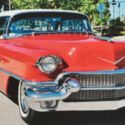 1956 Cadillac DeVille Sedan V8
1956 Cadillac DeVille Sedan V8
Mileage: 33,969
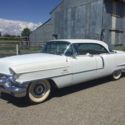 1956 Cadillac Sedan DeVille
1956 Cadillac Sedan DeVille
Mileage: 140,000
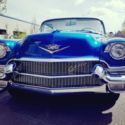 1956 Cadillac Series 62 Sedan Deville
1956 Cadillac Series 62 Sedan Deville
Mileage: 14000
 1956 CADILLAC SEDAN DEVILLE *** NO RESERVE***
1956 CADILLAC SEDAN DEVILLE *** NO RESERVE***
Mileage: 34,644
 1956 Cadillac Sedan Deville 4-Door
1956 Cadillac Sedan Deville 4-Door
Mileage: 48,040
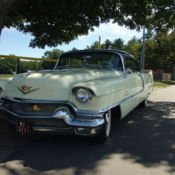 1956 Cadillac Sedan DeVille 4 Door Hardtop
1956 Cadillac Sedan DeVille 4 Door Hardtop
Mileage: 94,530
 1956 Cadillac Sedan DeVille Hard Top No Reserve!
1956 Cadillac Sedan DeVille Hard Top No Reserve!
Mileage: 84,000
 1956 Cadillac Sedan Deville, MAKE OFFER
1956 Cadillac Sedan Deville, MAKE OFFER
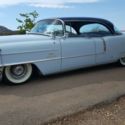 1956 Cadillac Sedan DeVille Series 62 Hardtop
1956 Cadillac Sedan DeVille Series 62 Hardtop
Mileage: 1234567













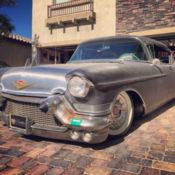 1957 Cadillac Sedan Deville 57 Hot Rod Rat Rod Kustom Black Plate Car Series 62
1957 Cadillac Sedan Deville 57 Hot Rod Rat Rod Kustom Black Plate Car Series 62